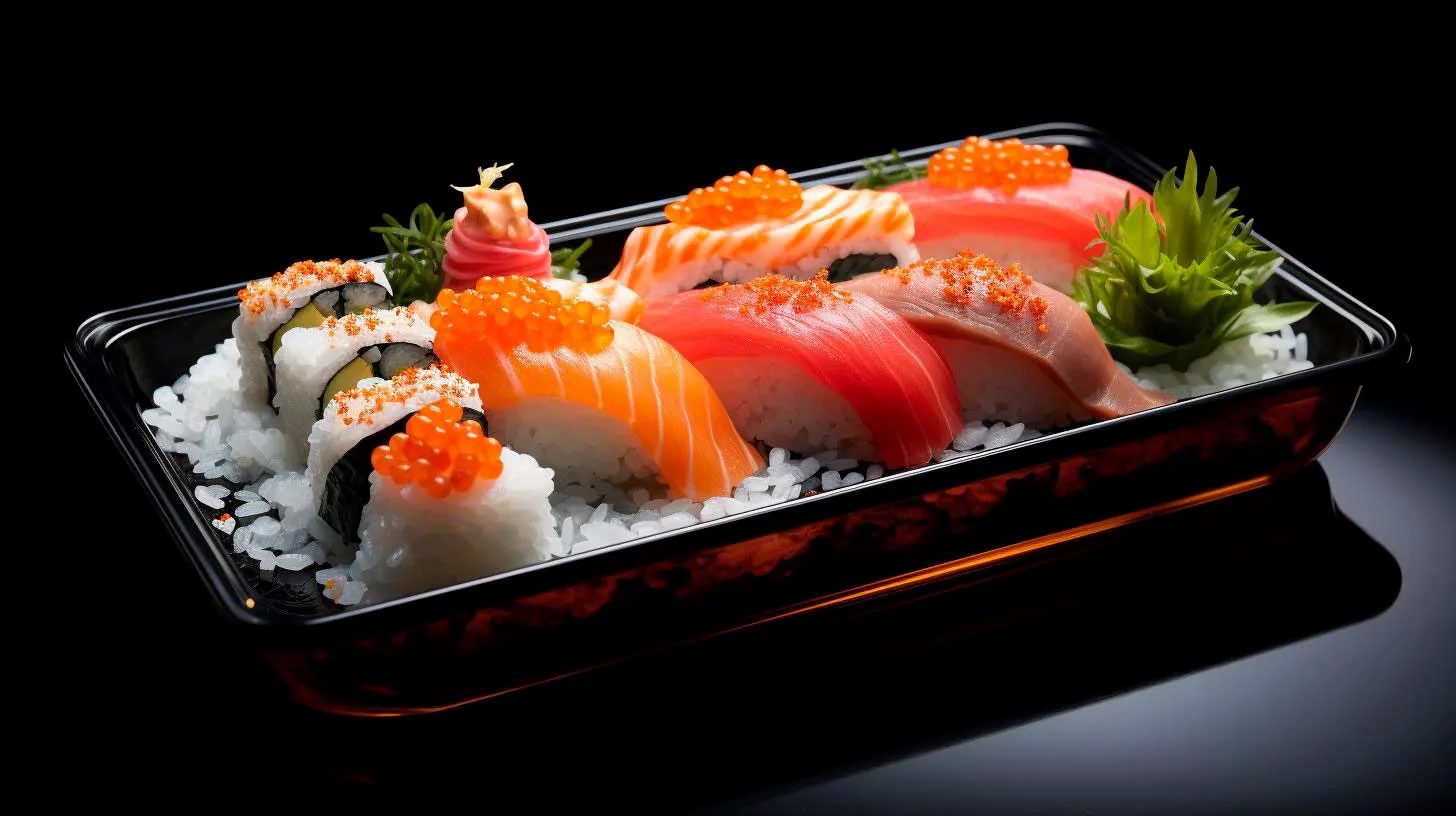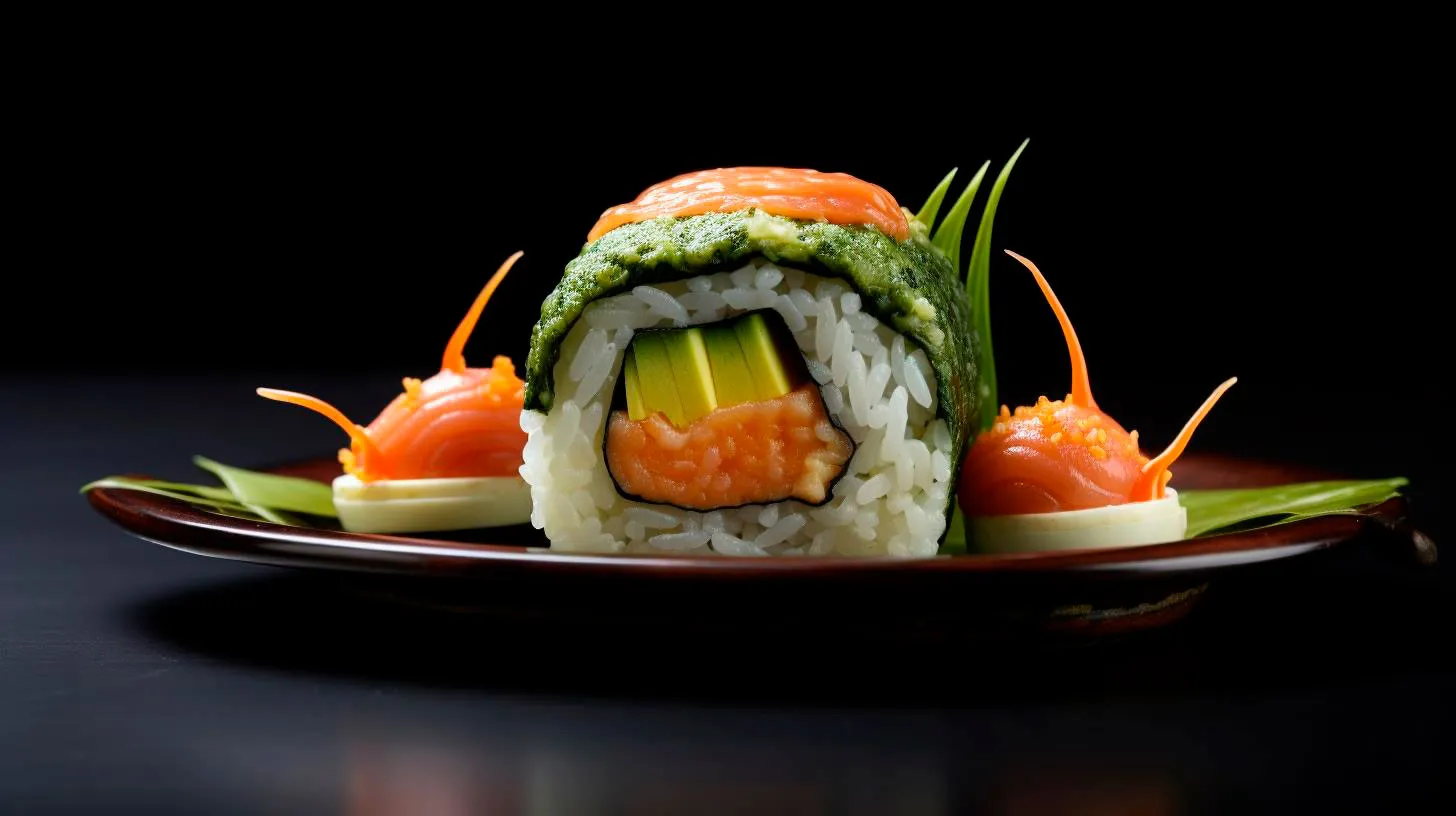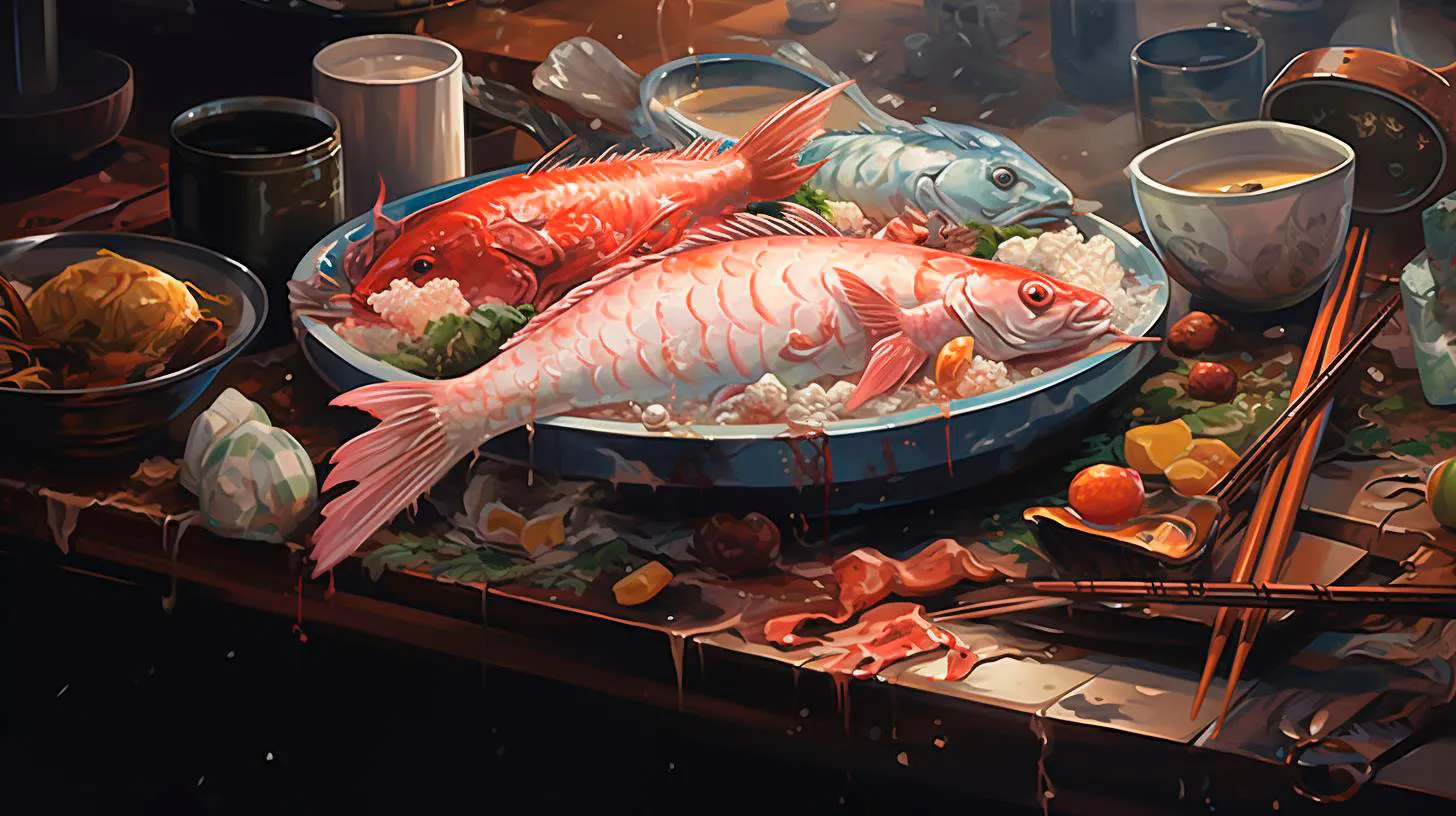The Art of Crafting Michelin-Starred Sushi
In this article, we explore the secrets behind crafting Michelin-starred sushi, the techniques involved, and the key takeaways that make it stand out.
The Importance of Fresh Ingredients
Central to the art of crafting Michelin-starred sushi is the use of the freshest ingredients available. Each component, from the fish and rice to the wasabi and soy sauce, is carefully selected for its quality and flavor profile. Using the finest ingredients not only enhances the taste but also ensures that every bite is a delightful and memorable experience. Here are some key points to note:
- Michelin-starred sushi chefs prioritize sourcing their seafood from reputable suppliers who use sustainable fishing practices.
- The fish must be handled with great care to maintain its freshness and taste. Chefs often rely on their trusted network of suppliers to ensure the highest quality possible.
- Rice, a fundamental element of sushi, is meticulously prepared using specific ratios of water, vinegar, and seasoning. It must be cooked to perfection, offering a delicate balance of flavors.
- Aside from fish, other ingredients like vegetables and seaweed are sourced from local markets to support the community and ensure their freshness.
The Art of Knife Skills
Knife skills play a crucial role in the creation of Michelin-starred sushi. The precise and swift movements of the chef’s knife are what transform raw ingredients into delicate morsels of culinary delight. Here’s what you need to know:
- Chefs undergo years of rigorous training to master the art of knife skills. This includes learning different cutting techniques, such as the crosswise cut (hira-zukuri), diagonal cut (sogi-zukuri), and thin slice (usuzukuri).
- A sharp knife is essential to achieve clean cuts without damaging the delicate texture of the fish or other ingredients.
- The size and shape of each cut are carefully considered to ensure a harmonious blend of flavors and textures in every bite.
- Attention to detail is crucial when slicing fish for sushi. The angle and pressure applied can significantly impact the taste and appearance.
Presentation: A Feast for the Eyes
Michelin-starred sushi isn’t just about taste; it’s also a feast for the eyes. Presentation is an integral part of the dining experience, reflecting the artistry and creativity of the chef. Here are some key points regarding the presentation:
- Sushi is not randomly arranged on a plate. There is a meticulous approach to placement, considering aspects such as color, texture, and shape.
- Chefs often incorporate traditional Japanese aesthetics, such as minimalism and symmetry, to create visually stunning presentations.
- Garnishes like edible flowers, microgreens, and carefully sliced vegetables add an extra touch of beauty and flavor to the dish.
- Plating techniques, such as arranging sushi in a specific order or using varying heights, enhance the visual appeal and create a sense of balance.
The Zen Connection
Sushi making is not solely about technical skills; it is an art form that requires a deep connection with the ingredients and the dining experience. Michelin-starred sushi chefs embrace the Zen philosophy, which emphasizes mindfulness, simplicity, and harmony. Here’s how this connection influences the sushi-making process:
- Before starting their work, sushi chefs take a moment to appreciate the ingredients, expressing gratitude for their role in creating a memorable dish. This sense of respect and mindfulness is reflected in every step of the process.
- The chef’s focused and calm demeanor while crafting sushi enhances the dining ambiance, creating a serene and enjoyable experience for guests.
- Michelin-starred sushi chefs often have a deep knowledge of traditional Japanese tea ceremonies and other related practices. These influences further infuse their creations with a sense of harmony.
Key Takeaways
As we delve into the world of Michelin-starred sushi, here are some key takeaways to remember:
- Using the freshest and highest-quality ingredients is essential in creating an exceptional sushi experience.
- Knife skills are honed through years of practice and are crucial for achieving precise and delicate cuts.
- Presentation is an art form in itself, with attention paid to both visual appeal and taste.
- The connection between the chef, ingredients, and dining experience is vital in creating a memorable and harmonious meal.
In conclusion, the art of crafting Michelin-starred sushi combines culinary expertise, aesthetics, and a mindful approach. From the selection of ingredients to the precision of knife skills and the beauty of presentation, every aspect is meticulously executed to elevate sushi into a truly exceptional dining experience.
Elevating the Dining Experience: Design and Atmosphere in Sushi Restaurants
In this article, we’ll explore how design and atmosphere can elevate the dining experience in sushi restaurants, leaving a lasting impression on customers.
The Power of Design
Design elements have the potential to transform a sushi restaurant into a visually appealing and memorable space. Here are some key considerations to enhance the design:
- Minimalist aesthetics: Incorporating clean lines, simplicity, and minimalism in the interior design can create a sophisticated and calming atmosphere.
- Traditional influences: Blending traditional Japanese elements with a modern touch can give a unique identity to the restaurant, showcasing the rich culture and heritage of sushi.
- Lighting: Thoughtful lighting choices can set the mood and ambiance of the restaurant. Dimmed lights and warm tones can create a cozy and intimate dining experience.
- Materials and textures: Using natural materials like wood, bamboo, and stone can add an organic and authentic feel to the space.
- Art and decorations: Incorporating Japanese-inspired artworks, calligraphy, or bonsai plants can enhance the overall aesthetic appeal and provide a sense of authenticity.
Creating the Perfect Atmosphere
In addition to design, creating the right atmosphere is crucial for a memorable dining experience. Here are some factors to consider:
- Music: Choosing the right background music can greatly influence the dining experience. Soft, traditional Japanese tunes or relaxing jazz can create a serene environment.
- Seating arrangements: Providing comfortable seating options, such as traditional low tables with floor cushions or cozy booths, can contribute to a relaxed and enjoyable meal.
- Open sushi bar: Having an open sushi bar allows customers to witness the sushi-making process, creating a sense of transparency and connection with the chefs.
- Tableware and presentation: Paying attention to the details of tableware, including elegant chopsticks and beautiful plates, adds to the overall aesthetic experience.
- Personalized service: Well-trained staff who are knowledgeable about sushi and its traditions can provide valuable insights to customers, enhancing their dining journey.
Benefits and Key Takeaways
Elevating the dining experience through design and atmosphere in sushi restaurants offers several benefits:
- Customer satisfaction: A thoughtfully designed space combined with an enticing atmosphere enhances customer satisfaction, ensuring they have a memorable experience and are likely to return.
- Positive reviews and word-of-mouth: Satisfied customers are more likely to share their positive experiences with others, resulting in increased visibility and potential new customers.
- Brand reputation: A well-designed sushi restaurant with a captivating atmosphere creates a unique brand identity, making it stand out from competitors in the market.
- Increased revenue: Providing a memorable dining experience can lead to higher customer loyalty, increased referrals, and ultimately, improved revenue for the restaurant.
Industry Statistics
Let’s take a look at some industry statistics that highlight the importance of design and atmosphere:
- According to a survey conducted by Restaurant Development + Design, 95% of customers believe that restaurant design contributes to their overall dining experience.
- An OpenTable survey found that 86% of customers are more likely to recommend a restaurant based on its atmosphere and ambiance.
- According to the National Restaurant Association, 79% of customers consider the restaurant’s ambiance, layout, and decor important factors in their dining experience.
- A study by Cornell University showed that customers are willing to pay up to 10-14% more for meals in aesthetically pleasing environments.
In conclusion, design and atmosphere play a pivotal role in creating a memorable dining experience in sushi restaurants. By incorporating minimalist aesthetics, traditional influences, and attention to detail, sushi establishments can differentiate themselves from competitors and provide an unforgettable experience for their customers. Remember, a well-designed space combined with an inviting atmosphere can be the key to success in the highly competitive restaurant industry.
Mastering the Techniques Secrets of Michelin-Starred Sushi Chefs
The Art of Sushi Making
Sushi making is a meticulous process that requires attention to detail and a deep understanding of flavors and textures. Here are some key techniques employed by Michelin-starred sushi chefs:
- Knife Skills: A sushi chef’s knife is an extension of their hand. Mastering precise knife skills is crucial for creating perfectly sliced fish and other ingredients. The blade must be sharpened to perfection, allowing for clean cuts without any bruising or tearing.
- Rice Preparation: The rice, a vital component of sushi, must be cooked to the perfect texture and seasoned with a delicate balance of vinegar, salt, and sugar. Sushi chefs take great care in selecting the right rice and perfecting their technique to ensure each grain is evenly seasoned.
- Fish Selection: Sourcing the finest quality fish is of utmost importance. Michelin-starred sushi chefs have established relationships with trusted suppliers who provide them with top-notch, impeccably fresh fish. They also have an in-depth knowledge of different fish species, their seasonality, and the best ways to handle and prepare them.
- Ingredient Combinations: The artistry of sushi lies in the harmonious combination of flavors and textures. Michelin-starred chefs are masters at pairing different types of fish and accompanying ingredients such as seaweed, soy sauce, and wasabi. This careful balance creates a symphony of flavors with each bite.
Advantages of Michelin-Starred Techniques
The techniques used by Michelin-starred sushi chefs offer several advantages:
- Unparalleled Flavor: By employing these techniques, you can unlock a world of exquisite flavors. The attention to detail in every step of the sushi-making process ensures that each ingredient shines, resulting in a taste sensation like no other.
- Presentation Excellence: Michelin-starred sushi chefs understand the importance of presentation. Their meticulous plating techniques transform each sushi dish into a visual masterpiece. By mastering these techniques, you can impress your guests not only with the flavors but also with the stunning presentation.
- Cutting-Edge Creations: These techniques are the foundation for creativity in sushi making. Once you have mastered the basics, you can push the boundaries and experiment with innovative flavors and unique combinations. The possibilities are endless.
Key Takeaways
Mastering the techniques secrets of Michelin-starred sushi chefs requires time, dedication, and a genuine passion for the craft. Here are some key takeaways to keep in mind:
- Invest in quality knives and keep them sharp for precise and clean cuts.
- Learn the art of rice preparation, ensuring it is cooked to perfection and seasoned with a delicate hand.
- Take the time to source the freshest and highest quality fish you can find.
- Experiment with ingredient combinations to create unique and flavorful sushi creations.
- Pay attention to presentation, as it enhances both the visual appeal and overall dining experience.
- Practice and refine your techniques regularly, as consistency is key to achieving mastery.
As you embark on your sushi-making journey, remember that mastering the techniques secrets of Michelin-starred sushi chefs is an ongoing process. Push your boundaries, unleash your creativity, and enjoy the incredible flavors that this traditional Japanese cuisine has to offer.
Behind the Scenes: The Ingredients for Sushi Excellence
Let’s roll!
1. Rice: The Heart and Soul of Sushi
When it comes to sushi, the rice is the unsung hero. Sushi rice, also known as shari, is the key ingredient that binds everything together. To achieve the right texture, it must be short-grained and sticky, yet each grain should retain its individuality. The rice is typically seasoned with a mixture of vinegar, sugar, and salt, known as sushi-meshi, which adds a delicate tanginess.
- Short-grained and sticky rice is essential for creating the perfect sushi roll.
- The seasoning of the rice with sushi-meshi elevates its flavor profile.
- Properly cooked sushi rice is the foundation for well-structured sushi.
2. Fresh Fish: The Star of the Show
When it comes to sushi, the quality and freshness of the fish cannot be compromised. The fish should be as fresh as possible, ensuring a clean and vibrant taste. The most common types of fish used in sushi include tuna, salmon, yellowtail, and snapper. Each type has its own unique flavor and texture, making every bite a delightful experience.
- Using fresh fish guarantees a delicious and enjoyable sushi experience.
- Different types of fish provide a variety of flavors for sushi enthusiasts.
- High-quality sourcing ensures the fish is sustainable and ethically caught.
3. Seaweed: The Crunchy Wrapper
Seaweed, also known as nori, adds a delicate crunch and umami flavor to sushi rolls. It serves as the wrapper for the fillings, imparting a distinct taste that complements the other ingredients. Seaweed is incredibly nutritious, packed with vitamins, minerals, and antioxidants.
- The umami flavor and crunchiness of seaweed enhance the overall sushi experience.
- Seaweed is a nutrient-dense ingredient, providing health benefits.
- Properly sourced seaweed ensures sustainable farming practices.
4. Vegetables and Other Fillings: Adding Texture and Flavor
Sushi isn’t all about fish; vegetables and other fillings play a crucial role in creating a balanced sushi roll. Ingredients like cucumber, avocado, carrot, and pickled radish provide contrasting textures and flavors. They add a refreshing element to the roll, making it more interesting and satisfying.
- Vegetables and fillings bring variety and add different textures to sushi rolls.
- They provide a fresh and healthy option for vegetarian sushi lovers.
- Using seasonal and locally sourced vegetables enhances the sustainability aspect.
5. Condiments and Dips: Elevating the Flavor
No sushi experience is complete without the condiments and dips that accompany it. Soy sauce, wasabi, and pickled ginger are staples in any sushi spread. Each of these enhances the flavor profile of the roll, bringing out the unique characteristics of the ingredients.
- Soy sauce, wasabi, and pickled ginger provide a balanced taste to sushi.
- Wasabi adds a hint of spiciness, while pickled ginger offers a refreshing palate cleanser.
- Using low-sodium soy sauce promotes a healthier sushi experience.
Now that you know the essential ingredients for sushi excellence, you can appreciate the craft and attention to detail that goes into every roll. From the flavorful rice to the freshest fish and perfectly paired condiments, each component contributes to the overall sushi experience. So, the next time you indulge in a sushi feast, take a moment to savor each ingredient and revel in the mastery that creates sushi perfection.



